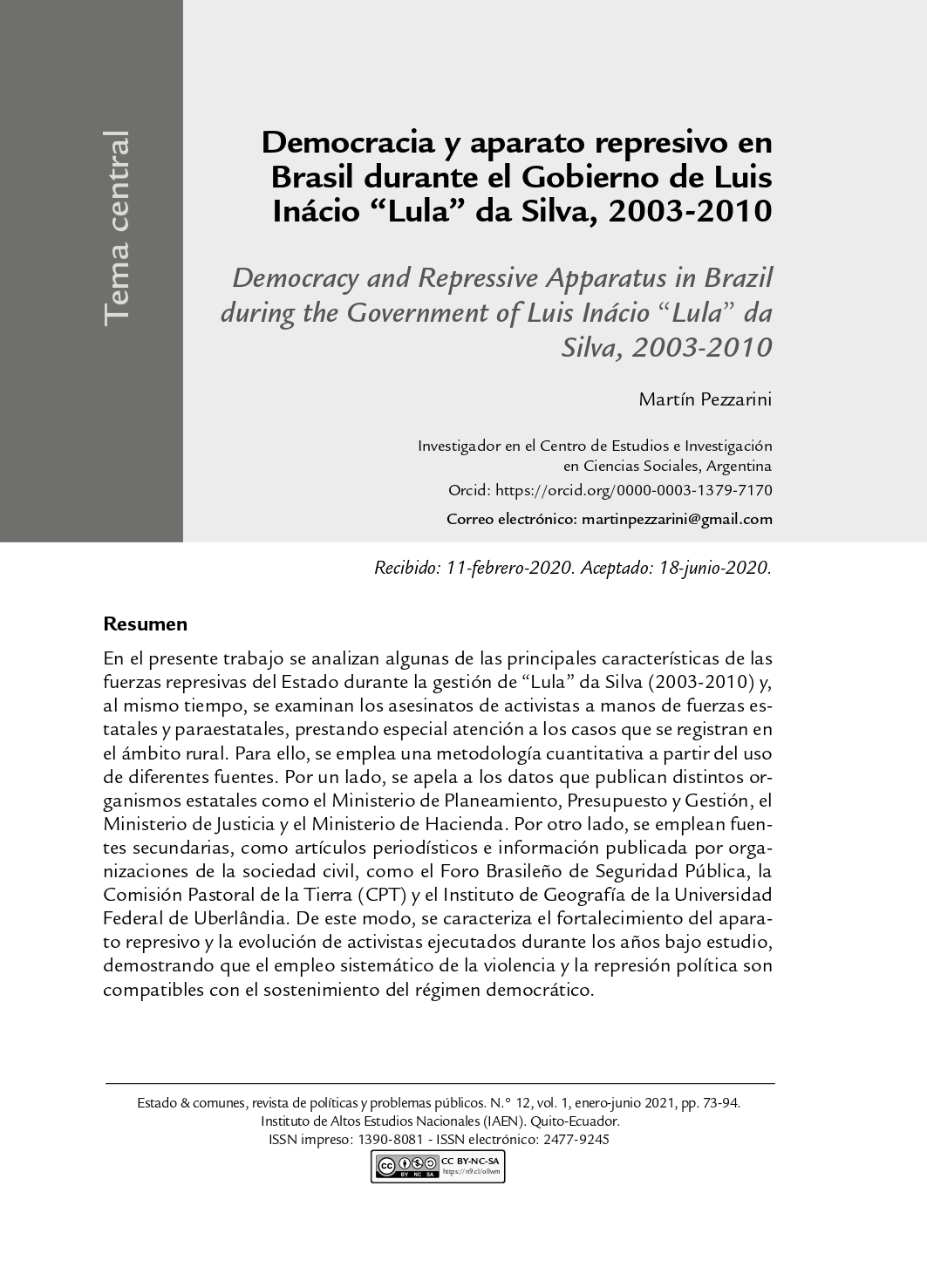Democracy and Repressive Apparatus in Brazil during the Government of Luis Inácio “Lula” da Silva, 2003-2010
Main Article Content
Abstract
This paper analyzes some of the main characteristics of the State's repressive forces during “Lula” da Silva´s administration (2003-2010) and, at the same time, examines the murders of activists by government and parastatal forces, paying special attention to cases registered in rural areas. This work was made with a quantitative methodology from different sources. On the one hand, we analyzed data published by different public bodies, such as the Ministry of Planning, Budget and Management, the Ministry of Justice and the Ministry of Finance. On the other hand, we also used secondary sources, such as newspaper articles and information published by civil society organizations, as the Brazilian Public Safety Forum, the Pastoral Land Commission (CPT) and the Geography Institute of the Federal University of Uberlândia. The development of the repressive apparatus and the evolution of activists executed during the years under study, demonstrates that the systematic use of violence and political repression are compatible with the maintenance of the democratic regime.
Downloads
Article Details
How to Cite
Issue
License
Copyright (c) 2021 Martín Pezzarini











